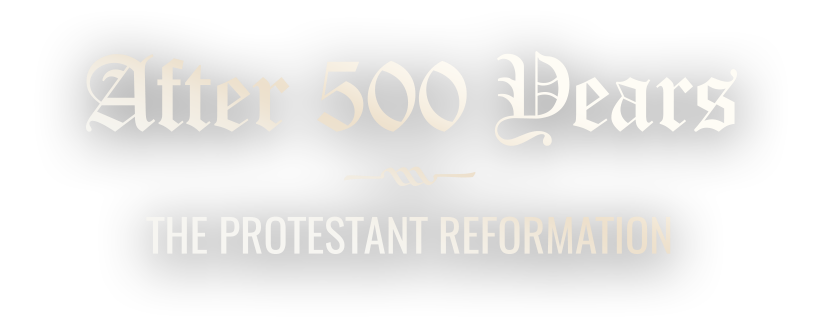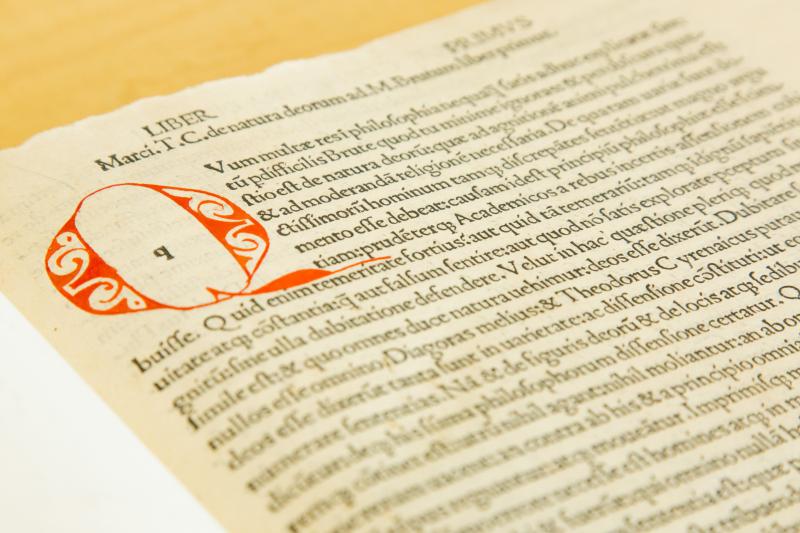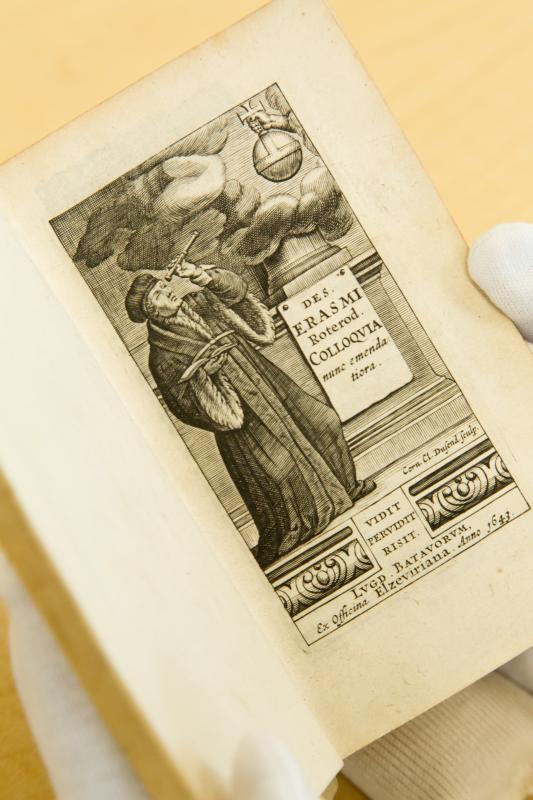Back to the Sources: The Renaissance and Humanism
An improved Latin and an expanded knowledge of ancient society now aided all sides in attacking their religious foes.
A small number of literate Italian men, often connected with the emerging legal profession, began to notice the superior Latin style of their ancestors and to imitate it. The late Ronald Witt (d. 2017) observed that the fourteenth-century writer Francesco Petrarch (d. 1374) was in fact not the originator of this revival of classical letters associated with the Renaissance cultural movement; he was rather a member of the third generation. Petrarch was, nevertheless, the great early publicist of the literary attainments of his Roman forebears. His own imitations of Ciceronian Latin, as well as his poetry in the Tuscan dialect, would arouse admiration throughout Europe in due course. The Romans made him poet laureate in 1341. The Venetians gave his earthly remains a state funeral. In the nineteenth century, European scholars began to refer to those men as humanists who were engaged in reviving classical literature and who deeply admired the civic values of prominent Romans.
An attraction to ancient Greek letters came later on. Around 1400, the Byzantine diplomat Manuel Chrysoloras spent several years in Italy teaching classical Greek to already highly literate men of affairs. From that time forward, Greek became part of the grammar school curriculum, and scholars were able to pursue works of Greek origin directly back to the sources (ad fontes) instead of relying on Latin translations. The mastery of Greek represented a decisive advance for those who sought the meaning of the New Testament.
The cultural interests of Renaissance humanists expanded to encompass ancient politics, history, and educational theory. In the urban setting of the Italian Peninsula, these men stressed rhetoric as an exemplary medium, reflecting the practical requirements of communication both in the ancient world and in their own time. In all their writings, they placed human experiences ever more directly at the center of explanation—rather than God, Fate, or myth. Still, they were notably religious men, even clergy or other servants of the Church. Traditionally minded writers, collectively referred to as Scholastics, accused their humanist opponents of being pagans, like their ancient models. But leading humanists like the Roman Lorenzo Valla wrote about Christianity in works such as “Dialogue on Free Will,” and “Annotations of the New Testament.”
Currents that were popular in Italy were bound to pass over the Alps and affect similar intellectual circles in the North of Europe. From at least the fifteenth century, Renaissance themes and persons were known from Hungary to England. Educators undertook curricular reform in grammar schools, introducing newly revived ancient works, a stress on rhetoric, and the mastery of ancient Greek along with “improved” Latin. In time, these trends would also transform the study of liberal arts at universities and somewhat alter the course of study even in the three professional faculties. Philipp Melanchthon and Martin Luther advised the Saxon elector Frederick the Wise on modernizing what was taught at the newly founded University of Wittenberg.
The Protestant Reformers drew heavily on the linguistic and critical skills of the humanists around them, but they differed notably from these colleagues. The Reformers’ stress on an existence beyond the present and a God who determined every vicissitude before the foundation of the world meant that they could not elevate the role of human beings in shaping earthly affairs. The “prince of humanists,” Erasmus of Rotterdam, could not agree with Martin Luther on the enslavement of the human will, its total incapacity to contribute toward salvation. Nonetheless, religious Reformers adopted humanist approaches in ferreting out the meanings of ancient biblical texts and thus in translating Scripture into the vernacular languages of the common people. Luther referred repeatedly to Erasmus’s retranslation of the New Testament from Greek into Latin (Novum instrumentum, 1516) in the process of rendering his own German Bible. Despite his anti-Semitism, which was typical of his day, Luther sided with humanist Johannes Reuchlin in advocating the preservation of Hebrew books so that the Old Testament could be properly understood.
Northern humanists were more inclined to take up religious subjects than their Italian counterparts were. When the tumult of the Reformation came, the ranks of these scholars divided. Renaissance sodalities in the cities dissolved into factions: partisans of the new religious rebels and stalwarts of Holy Mother Church. Traditional intellectuals, the Scholastics, dug in their heels. An era of polemics, flying in multiple directions, was ushered in. An improved Latin and an expanded knowledge of ancient society now aided all sides in attacking their religious foes.
To cite text:
Karant-Nunn, Susan, & Lotz-Heumann, Ute (2017). Confessional Conflict. After 500 Years: Print and Propaganda in the Protestant Reformation. University of Arizona Libraries.
Selected titles from University of Arizona Special Collections:
Epistolae obscurorum virorum, n.p., 1643
Desiderius Erasmus (1467-1536). Wit against Wisdom, Oxford, 1683
Desiderius Erasmus (1467- 1536). Colloquia. Amsterdam, 1686
Saint Jerome (–ca. 420). Correspondence. London, 1533
Johann Heinrich Majus (1653-1719). Vita J. Reuchlini, Nuremberg, 1687
Hartmann Schedel (1440-1514). ), Liber chronicarum, page Perugia (colored). Nuremberg, 1493
Marcus Tullius Cicero (106-43 BCE). De natura deorum, Venice, 1494
Lorenzo Valla (1407-1457). Elegantiae de linguae latinae, Venice, 1496


